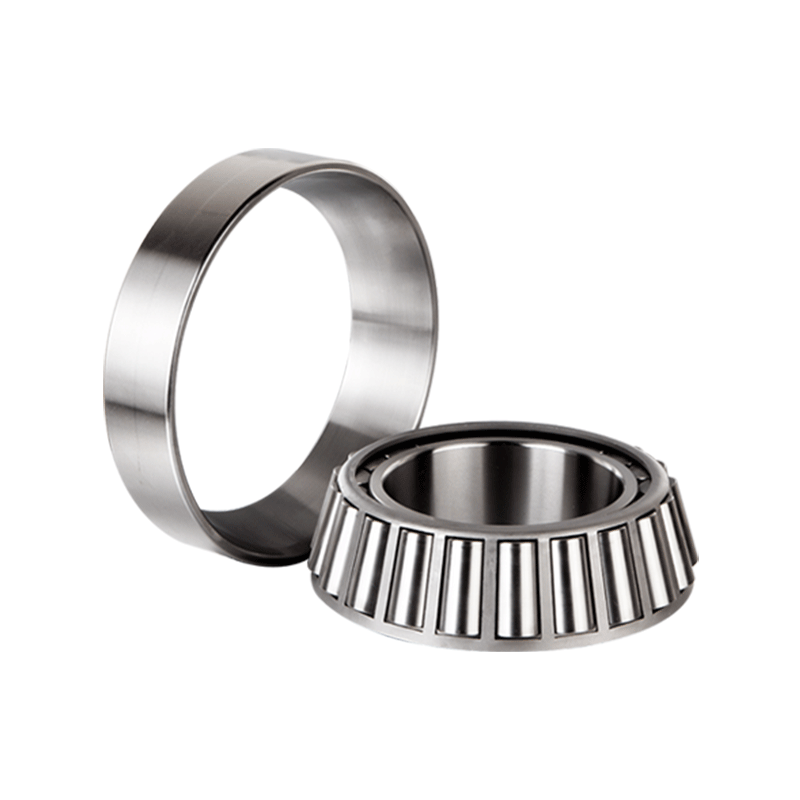Tapered roller bearings are designed to handle both axial (thrust) and radial loads due to their unique construction. Here's how they manage these loads:
Radial Load Handling: Tapered roller bearings exhibit a unique design wherein the rollers are tapered, allowing for a larger contact area with the raceways. This design feature facilitates the distribution of radial loads across a broader surface, effectively reducing stress concentrations that could otherwise lead to premature failure. Compared to other types of bearings, such as ball bearings, tapered roller bearings boast a superior capacity to withstand radial loads. This heightened capacity is attributed to the elongated shape of the rollers and the optimized distribution of forces along the bearing's structure, resulting in enhanced load-bearing capabilities.
Axial Load Handling: The inherent angle at which the rollers are positioned induces axial loads when radial loads are applied to the bearing. This phenomenon occurs due to the contact angle between the rollers and the raceways, resulting in a unique ability to handle both radial and axial loads concurrently. Tapered roller bearings are engineered with a specific contact angle tailored to efficiently manage axial loads. By optimizing this angle, engineers can fine-tune the bearing's performance to meet the precise axial load requirements of diverse applications, ensuring optimal functionality and reliability. In scenarios necessitating the management of axial loads in both directions, engineers often employ paired arrangements of tapered roller bearings. These configurations, such as back-to-back (DB) or face-to-face (DF), enable the bearings to effectively handle axial loads in either direction, offering versatility and adaptability in complex load-bearing situations.
Load Distribution: The tapered geometry of the rollers and raceways facilitates uniform load distribution along the length of the rollers. This characteristic ensures that no single point within the bearing experiences excessive stress, minimizing the risk of premature wear and failure. The continuous line contact between the rollers and the raceways further enhances load distribution, promoting optimal performance and longevity. By mitigating stress concentrations and evenly distributing loads, tapered roller bearings exhibit an extended operational life compared to alternative bearing types. This increased longevity is critical in demanding applications where reliability and durability are paramount, providing a cost-effective solution with reduced maintenance requirements over the bearing's lifespan.
Adjustability: Tapered roller bearings offer the unique advantage of adjustable clearance during installation. This adjustability allows for precise setting of preload, ensuring optimal performance and minimizing the risk of issues such as excessive preload or clearance, which can compromise bearing integrity and operational efficiency. Proper management of preload and clearance is essential to optimize the bearing's rigidity and stability under load. By fine-tuning these parameters during installation, engineers can tailor the bearing's performance to meet the specific requirements of the application, maximizing operational efficiency and reliability while minimizing the risk of premature failure.
Single Row Tapered Roller Bearings



 English
English Deutsch
Deutsch























